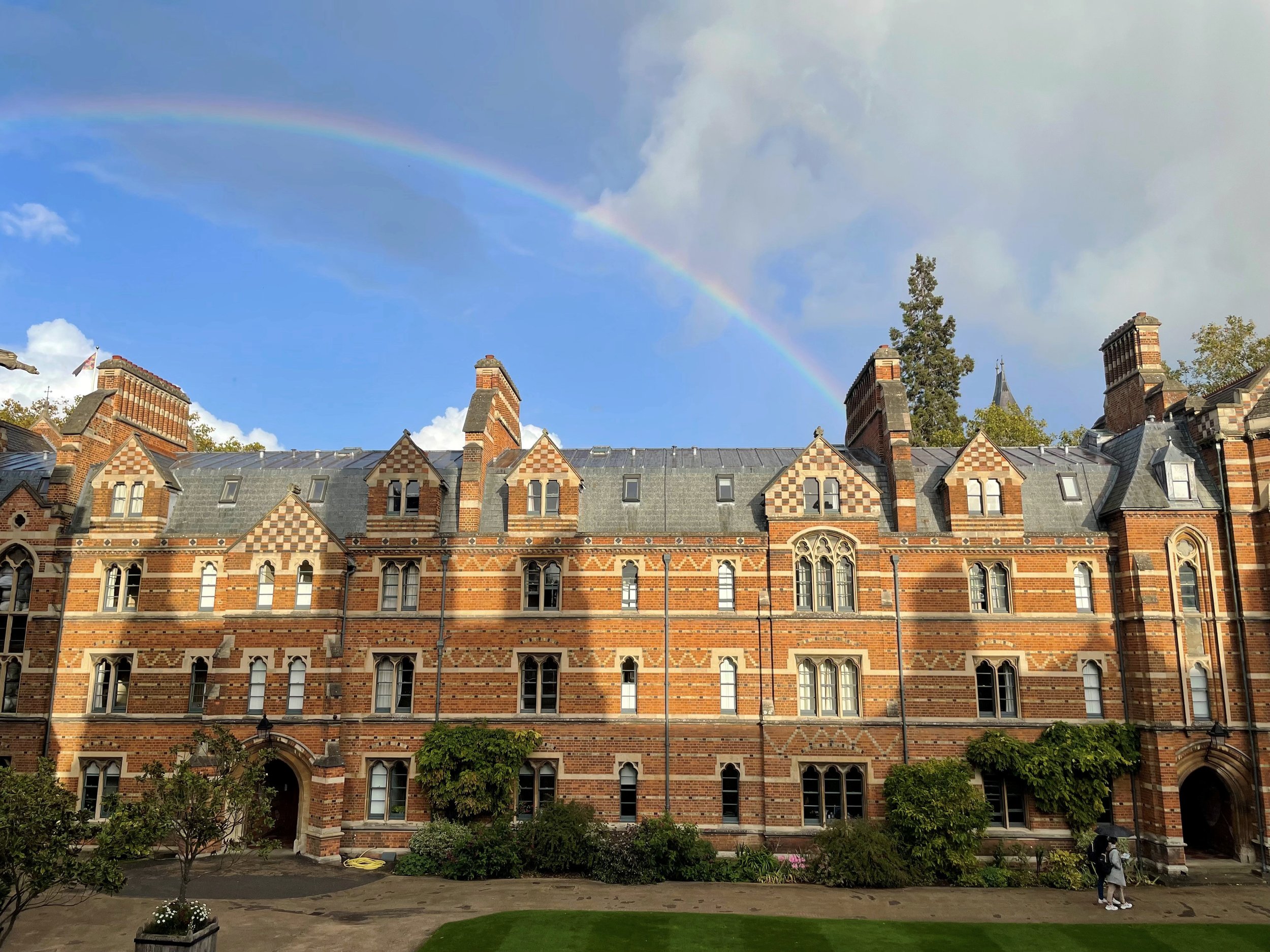Spotlight on Chemistry at Keble
Chemistry is the science that explains the everyday world, and molecules are pieces of the jigsaw that make up our reality. Chemistry makes possible many aspects of modern life — there’d be no digital world without the lithium battery, or advanced healthcare without synthetic chemistry. The study of chemistry involves testing and refining existing ideas of how molecules and systems behave through exploration of the parts that we don’t understand. This can take many forms — creating new molecules and materials, measuring their properties, or conceiving theories that explain molecular behaviour and reactivity. Keble is proud to have one of the largest undergraduate student intakes in the collegiate University (8 per year), and a breadth of graduate researchers, in a subject that has an immeasurable impact on our daily lives and our future. Our Tutorial Fellows in Chemistry are Professor Stephen Faulkner and Professor Stephen Fletcher. They are joined by Professorial Fellow Harry Anderson and a team of lecturers.
Below we provide an update on some of the current areas of research in Chemistry at Keble, which have been published in leading journals such as Chem and Nature Chemistry. The research we highlight impacts developments such as personalising medicine and understanding and harnessing complex chemical systems to access the next generation of technology.
Professor
Stephen Faulkner
Stephen Faulkner is a Professor of Inorganic Chemistry, and is Fellow and Tutor in Inorganic Chemistry at Keble.
Stephen Faulkner’s group are currently exploring the behaviour of complexes of lanthanides — elements near the bottom of the periodic table that everyone conveniently forgets, despite the fact that all of us use them daily. Besides their ubiquitous role in magnets and display technologies, lanthanides can also claim to have revolutionised soft tissue imaging, through the use of gadolinium complexes in magnetic resonance imaging (MRI), while luminescent lanthanide complexes play a key role in ultra-trace assays for drug discovery.
Steve’s lanthanide research is focused on developing complexes that can be used for quantitative imaging. The current generation of gadolinium complexes used in clinical MRI have all been designed to have a constant response that only depends on how much of the complex is present. This is great for imaging blood flow, but does not provide enough information to inform the clinical choices that could truly personalise medicine. Personalisation relies on being able to understand and observe fluctuations in the concentrations of key biomolecules and biomarkers. Recent work in this area includes the demonstration of a probe which responds to chloride ions (see https://pubs.rsc.org/en/content/articlelanding/2023/sc/d2sc05417e) and which works effectively in water. There is also an intensive programme of research aimed at understanding the physiology of hypoxia — the consequence of low oxygen levels associated with tumours, inflammation, heart disease and stroke (see http://redox.chem.ox.ac.uk).
Some of this research has resulted in an unexpected project in quantum information processing, exploiting the fact that systems that can be addressed in two different ways to provide a means to write and read information at the molecular level (PCCP, https://doi.org/10.1039/D4CP02243B).
Professor
Stephen Fletcher
Stephen Fletcher is a Professor at the Department of Chemistry, and a Tutorial Fellow in Organic Chemistry at Keble.
Stephen Fletcher’s research group have recently made important advances in two areas of chemistry. The first is relevant to drug discovery and the industrial synthesis of clinically used medicines and involves novel ways to make chiral (mirror-image) molecules enantioselectively, adapting the the Suzuki–Miyaura reaction, widely used in the pharmaceutical industry. This method is used to synthesise biologically active and pharmacologically relevant molecules, such as (S)-curcumene and the antidepressant sertraline (Zoloft®). The research is published in Nature Chemistry at https://www.nature.com/articles/s41557-023-01430-8.
Fletcher’s group is also interested in understanding the difference between living and non-living chemical systems, and on the possible origins of living systems — specifically, how mimicking the out-of-equilibrium chemistry in living systems may be harnessed in order to develop new types of machines. Two years ago, they showed how chemical systems of self-assembling, self-replicating molecules can be made to oscillate in time (see https://www.nature.com/articles/s41557-022-00949-6). Very recently, they reported the chemically fuelled oscillations of vesicles — cell-membrane-like assemblies of lipid molecules that may be relevant to the origins of life. Complex supramolecular events were observed during oscillations including vesicle reproduction, growth, and decomposition — and differences in the number, size, and mass of aggregates can often be observed within and between pulses. This system’s dynamic behaviour is reminiscent of a reproductive cycle in living cells (see https://pubs.acs.org/doi/full/10.1021/jacs.4c00860).
The group has also developed a related chemically driven reaction network which produces repeating chemical waveforms — these waveforms are highly controllable in time and can represent information. Novel means of transducing information, such as with radio waves, revolutionised technology in the 19th and 20th centuries, impacting every aspect of life. The group’s recent work published in the journal Chem (https://www.cell.com/chem/fulltext/S2451-9294(24)00231-6) describes the generation of repeating waves by a highly controllable chemical oscillator, encoding information in the sequence and appearance of the waveforms produced. Being able to understand and harness complex chemical systems to this extent is important to access the next generation of technology, such as chemical computers, sensors, and other responsive applications, particularly those driven by chemical energy and performing life-like functions.









